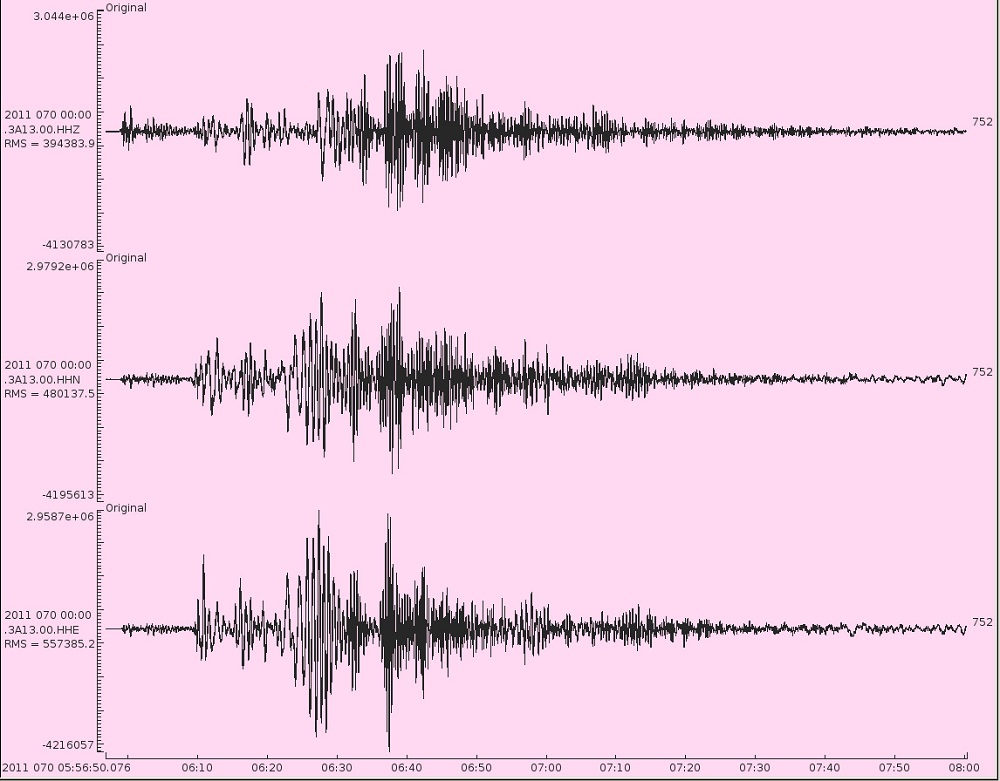Record of Japanese Earthquake Made in England

Devastation was striking Japan t on March 11 while over 5,000 miles away in a lab in the United Kingdom, researchers watched the 8.9 magnitude earthquake unfold on a computer screen.
The team of researchers, lead by Richard England of the University of Leicester, recorded the shaking of the earth on a seismometer, an instrument that records motion of the ground, including the seismic waves produced by earthquakes.
"Today's earthquake that occurred off the coast of Japan is unusually large," England said in a statement. "Only one or two earthquakes of this magnitude occur each year and when they occur they are not normally as close to the surface."
The resulting graph of the shaking earth shows how it moved in three dimensions: up-down, north-south and east-west. Researchers can use this information to study how the waves traveled through the Earth and analyze the earthquake after the fact.
"While Japan is well prepared for even this type of earthquake, it will be some time before the full extent of the damage is known," England said. "Most of the devastation will have been caused by the resulting tsunami from the movement of the seafloor at the epicenter of the earthquake."
The more the researchers learn about how the Earth's tectonic plates move against each other during this type of earthquake, the better predictions and defenses can be put in place for the next big earthquake. The team will continue to monitor the Earth's shaking as aftershocks occur, hampering rescue and relief efforts.
"In Japan the immediate danger will now be from continuing aftershocks. There was a magnitude 7.1 event this morning which would normally be considered a strong earthquake," England said. "These 'smaller' events will still have the potential to generate small tsunami and further shake buildings and infrastructure already damaged, further delaying rescue and relief efforts."
Sign up for the Live Science daily newsletter now
Get the world’s most fascinating discoveries delivered straight to your inbox.
You can follow LiveScience staff writer Jennifer Welsh on Twitter @microbelover.
Jennifer Welsh is a Connecticut-based science writer and editor and a regular contributor to Live Science. She also has several years of bench work in cancer research and anti-viral drug discovery under her belt. She has previously written for Science News, VerywellHealth, The Scientist, Discover Magazine, WIRED Science, and Business Insider.











